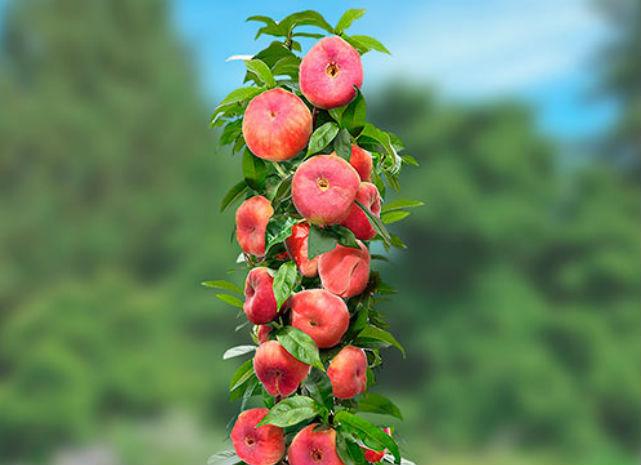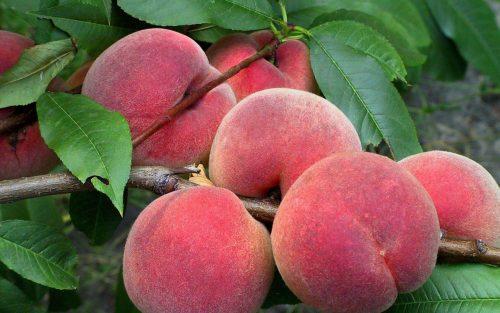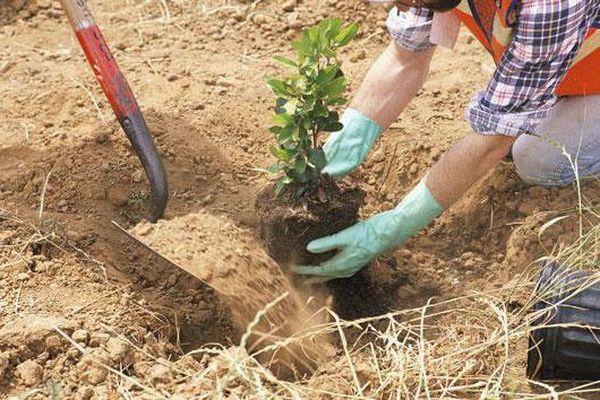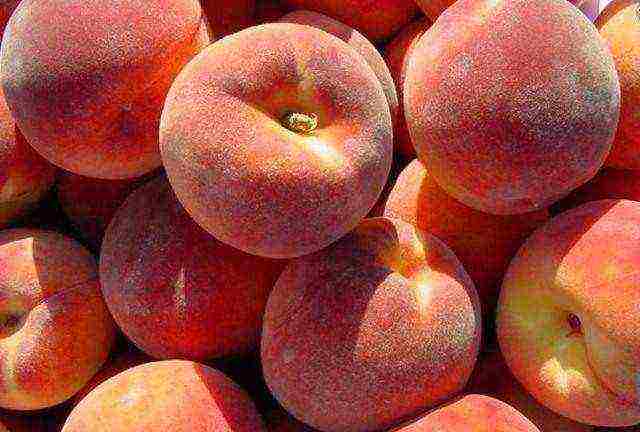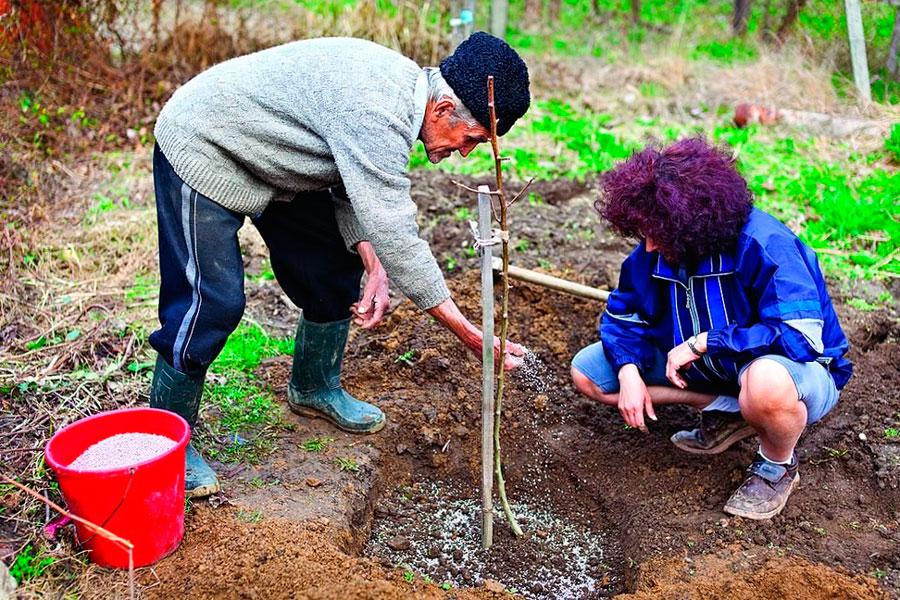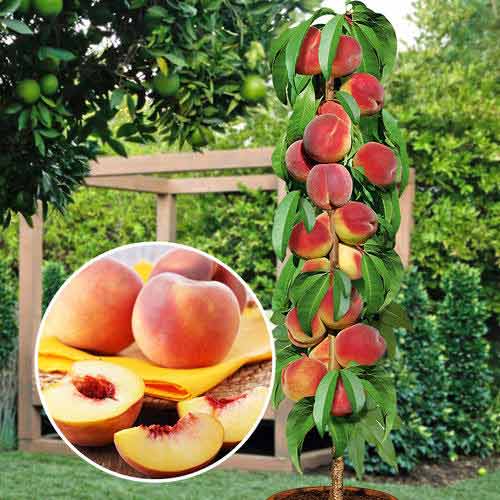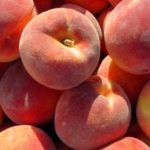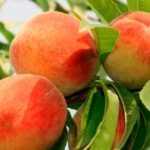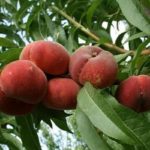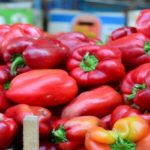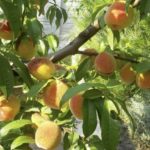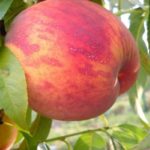Such an exotic plant as the columnar peach attracts the attention of gardening enthusiasts with its high decorative value and high yield. The name of the culture fully corresponds to its shape - the crown looks like a column. This is an excellent option for small areas - the fruit tree does not require large spaces, but it bears fruit and develops abundantly. In order for the cultivation of columnar peach to be successful, it is necessary to study in more detail its requirements for growing conditions and care.
General characteristics and description of columnar peaches
This fruit variety is a dwarf planting, the height of which is no more than 1.5 meters. Its crown has a cylindrical shape and is 40-60 centimeters wide. A miniature fruit tree looks impressive not only in group plantings, but also when grown in single copies. It looks especially beautiful in the flowering phase and when the fruits reach their consumer maturity.
In the columnar peach, the lateral shoots do not form branches; their growth is directed directly from the central conductor. It is this feature that explains the fact that the fruits are very close to the trunk, surrounding it. Their weight can reach up to 250 grams. The taste is high: the pulp is juicy, moderately dense, sweet and with a pronounced aroma.
They contain vitamins, essential oils, saccharides, plant acids and mineral compounds.
The leaf mass is distinguished by a dark green color. The shape of the plates is oval-oblong, the ends are pointed. The flowering stage occurs in mid-spring; the inflorescences are distinguished by a soft pink color. From one columnar peach it is possible to collect from 6 kilograms of fruit. Winter hardiness is excellent, up to -40 degrees.
Advantages and disadvantages
Among the positive characteristics of a miniature peach tree, experienced gardeners highlight:
- does not take up much space on the site;
- does not shade other fruit and berry crops;
- has sufficient frost resistance;
- It does not require special care;
- has increased immunity to major diseases and pests;
- high consumer qualities of fruits;
- good productivity indicators;
- does not require additional pollination (self-fertile).
But there are some disadvantages to the dwarf peach, including:
- short fruiting period;
- the need for frequent renewal of plantings;
- high cost of seedlings.
Popular varieties
The list of the best varieties of columnar peach includes:
- Gardener's totem. The plant is distinguished by its medium height (height - no more than 1.7 meters), large fruit (up to 290 grams) and high yield. Up to 14 kilograms of rounded and slightly crushed fruits are collected from one tree. They attract attention with their red blush and incredibly juicy flesh. The harvest is not afraid of transportation and retains its commercial qualities for a long time.
- Steinberg. The plant grows and develops well regardless of the amount of sunlight. It does not exceed 2 meters in height. The weight of the fruit is 155 grams, they are juicy and pleasant to the taste. The color is yellow-orange, there are places with a crimson tint.
- Anniversary of the capital. The ripening period is early, the height of the tree is 1.5 meters, the yield is up to 12 kilograms. The weight of one fruit is 230-250 grams, the shape is round. The tree is distinguished by its stable immunity to fungal infections and parasitic individuals.
- Golden triumph. With a tree height of 1.4 meters, its yield is 10-12 kilograms of tasty fruits. The weight of one is 280 grams. The color of the fruit is red, the pulp is juicy, the aroma is pronounced. The columnar peach variety has good resistance to cold, drought and most major diseases.
- Honey. The plant is mid-season, tall (up to 2 meters), its productivity is at the level of 10-12 kilograms. The average weight of the fruit is 180 grams. The taste characteristics are high: honey taste, sweet and juicy pulp. The color is yellow-red on the outside, yellow on the inside.
Features of cultivation
To obtain the desired result, you need to know the basic subtleties of the process of planting columnar peaches.
Timing
The timing of planting dwarf peaches directly depends on the climatic conditions in a particular region. In the southern regions, seedlings should be selected for a permanent place in the fall, but in the northern regions - in the spring. Young plantings need time to adapt and take root so that they can safely survive sub-zero temperatures. It is better to purchase annual seedlings, paying attention to the condition of the root mass.
Preparing the landing site
To make the planted trees comfortable and grow faster, you need to choose an area with a sufficient level of lighting - sunny.
If you plant in shaded areas, near various buildings, in wetlands, then there is a high probability of developing various diseases and depressing the general condition of the columnar peach.
Preparatory work should be carried out in advance, removing all excess vegetation and debris from the site. The place for planting a columnar peach must be dug up and enriched with useful components by adding humus or rotted manure to the soil. If the time for planting a columnar peach is spring, then preparation should be done in the fall. When planting in autumn, work must be carried out a month in advance.
Planting seedlings
The dimensions of planting holes for planting columnar peach are determined by its root system. In most cases, the hole is 50 centimeters in diameter and 50-60 centimeters deep. To avoid stagnation of moisture, drainage should be laid at the bottom: broken brick, expanded clay, crushed stone. The layer thickness should be 7-10 centimeters; the same layer of fertile soil is poured over the drainage.
To garter a columnar peach, you need to install a wooden peg in the hole.
Place the columnar peach seedling vertically, straightening its root system. Sprinkle a layer of earth on top, carefully compacting it to prevent the formation of voids in the planting hole. Finally, the columnar peach is watered abundantly (10 liters of water per plant), tied to a support, and mulched.
Rules for caring for trees
The list of basic measures for caring for columnar peach includes: adding nutrients, weeding, irrigation, carrying out preventive procedures against diseases and harmful insects.
Feeding
In order for the columnar peach to bear fruit abundantly and tolerate the cold season more easily, it is necessary to promptly fertilize the soil in the tree trunk circle. It is better to use for these purposes not chemical preparations, but self-prepared nutritional mixtures from natural ingredients.
In the spring, even before the buds open, the columnar peach is treated with urea, using a working solution of 700 grams of the product and 10 liters of water. At the stage of fruiting and flowering, it is necessary to spray with a decoction of orange peels, lemon balm, onion peels, red pepper, and burdock. For a better effect of the working fluid, it is worth adding crushed laundry soap to it. Thanks to this feeding, it is also possible to prevent the invasion of parasitic individuals and the development of dangerous diseases. The frequency of procedures is once every 7 days.
The autumn feeding procedure for columnar peach should be carried out using a 10% urea solution. Rotted manure and bird droppings are also suitable for these purposes.
Watering
The soil in the tree trunk circle should be moistened as the top layer dries. Water consumption per planting is 10-20 liters. For better aeration, the soil must be loosened after each irrigation; oxygen starvation of the root system of the columnar peach must not be allowed.
Trimming
When pruning columnar peach in spring and autumn, all incapacitated shoots with traces of disease are removed. Fruit trees should be pruned before sap begins to flow. Manipulations with the removal of dry and damaged shoots contribute to the growth of new branches, high productivity rates, and a reduction in the likelihood of developing diseases. Every year it is recommended to shorten the shoots by 15-20 centimeters.
Diseases and pests
Among the common ailments that affect columnar peach are: fungal diseases, clasterosporia, leaf curl. The development of diseases can be prevented by carrying out preventive measures using copper sulfate 3% for treatment.
The procedure is repeated again until the kidneys awaken. Before the flowering phase, Chorus, Speed, Strobe are used. Appropriate insecticides (Akarin, Fitoverm) should be used against aphids, ticks, and weevils. Pruning makes trees hardy and resistant to adverse environmental factors.
Columnar peach is an excellent solution for a small garden. The main thing is not to violate the rules of agricultural technology and plant healthy planting material.

